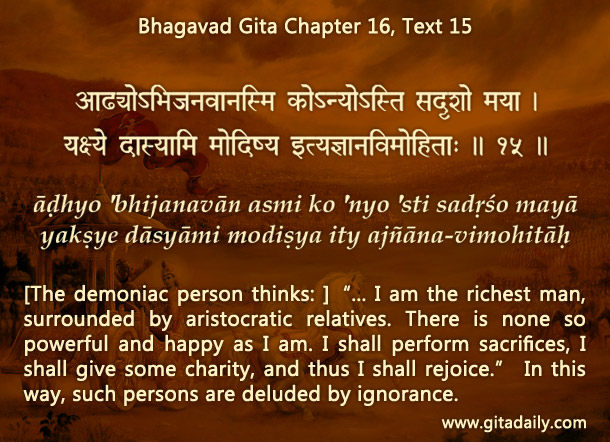We often operate with certain stereotypical conceptions of things. For example, in most traditions, evil is depicted as an ugly, grotesque being, maybe with horns protruding from the head.
However, what defines an evil person is not their appearance, but their conscience, their motivation, their worldview. The Bhagavad-gita, in its sixteenth chapter, discusses divine and demoniac natures in terms of qualities. People who are evil may look attractive, as is seen in the Mahabharata. Its primary villains are the Kauravas who are human beings, and their head, Duryodhana, is in his own way handsome and charismatic. He amasses a huge following, not just among his own brothers, but also among various kings across the world. Despite his apparent attractiveness, he is unconscionably evil.
The Gita (16.15) states that the demoniac often acquire trappings of success such as wealth and an illustrious peer circle by which they can pull off a class act. In fact, when evil is ugly, it’s easy to identify and to stay away from it. But when evil appears classy, it’s much easier to get seduced by it and subjected to it. By understanding that evil is more a matter of inner intention and disposition rather than of outer appearance, we can become more discerning about who we associate with, who we let ourselves get attracted to, and most importantly, who we let ourselves be influenced by. If people are acting to fulfill their lower drives such as lust, anger and greed, they are evil, even if they look attractive. If they are acting to trigger those drives in others so as to exploit others, then they are insidiously evil, even if they are considered celebrities in contemporary society.
By studying the Gita regularly, we can gain the penetrating vision by which to see beyond people’s superficial appearances to the actual substance of their character.
One-sentence summary:
Evil doesn’t always look ugly, it can look classy.
Think it over:
- How do you conceive evil? What stereotype is it based on?
- How do the Gita and the Mahabharata depict evil?
- How can we identify evil?
To know more about this verse, please click on the image


Leave A Comment